Ron Arstein
Navigating to Success in Multi-Modal Human-Robot Collaboration: Analysis and Corpus Release
Oct 26, 2023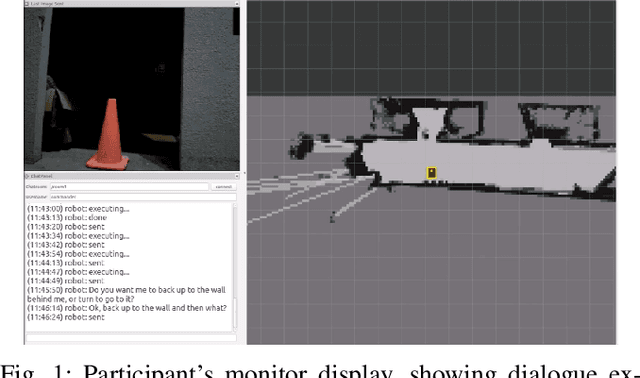
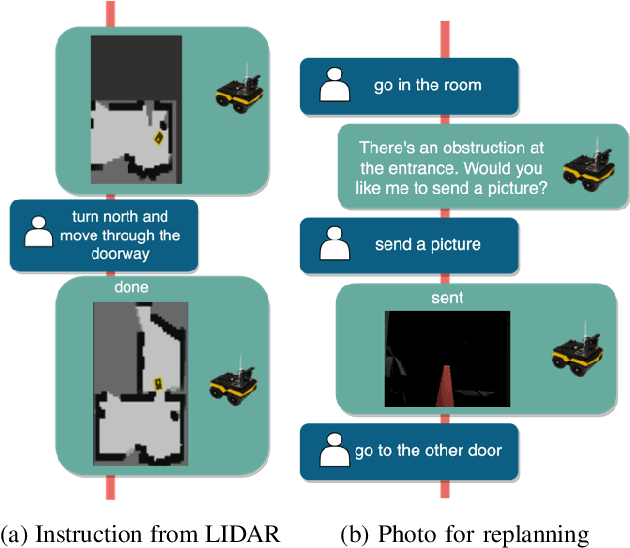
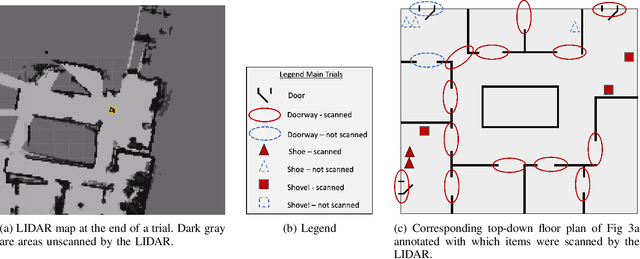
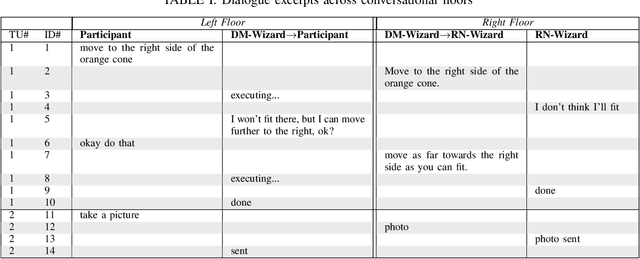
Abstract:Human-guided robotic exploration is a useful approach to gathering information at remote locations, especially those that might be too risky, inhospitable, or inaccessible for humans. Maintaining common ground between the remotely-located partners is a challenge, one that can be facilitated by multi-modal communication. In this paper, we explore how participants utilized multiple modalities to investigate a remote location with the help of a robotic partner. Participants issued spoken natural language instructions and received from the robot: text-based feedback, continuous 2D LIDAR mapping, and upon-request static photographs. We noticed that different strategies were adopted in terms of use of the modalities, and hypothesize that these differences may be correlated with success at several exploration sub-tasks. We found that requesting photos may have improved the identification and counting of some key entities (doorways in particular) and that this strategy did not hinder the amount of overall area exploration. Future work with larger samples may reveal the effects of more nuanced photo and dialogue strategies, which can inform the training of robotic agents. Additionally, we announce the release of our unique multi-modal corpus of human-robot communication in an exploration context: SCOUT, the Situated Corpus on Understanding Transactions.
* 7 pages, 3 figures
Consequences and Factors of Stylistic Differences in Human-Robot Dialogue
Jul 21, 2018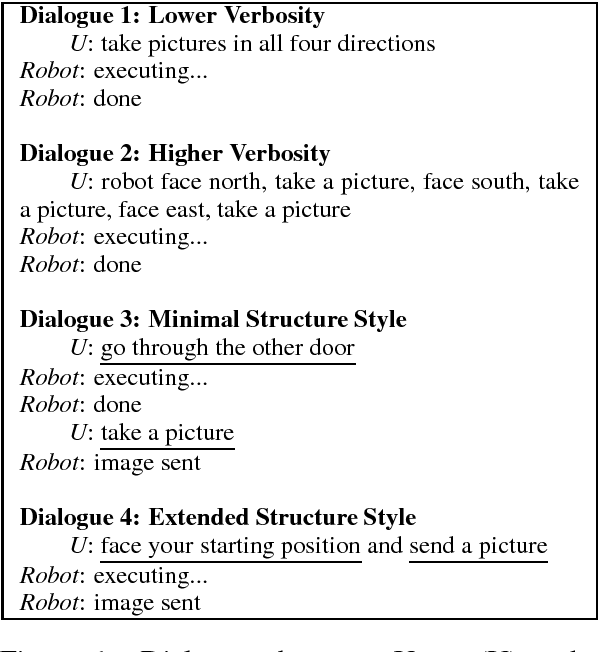
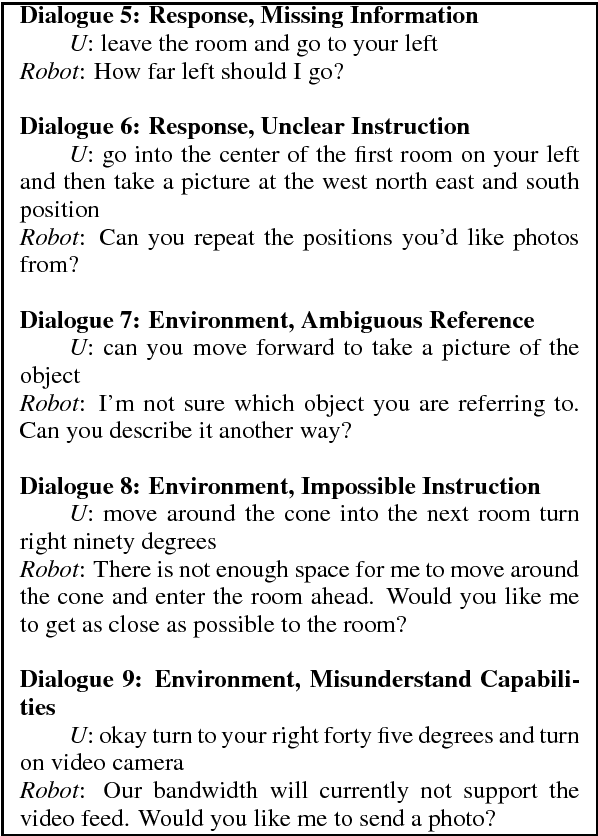
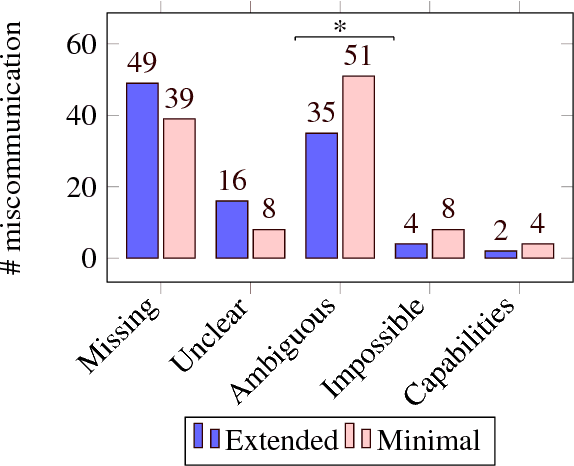
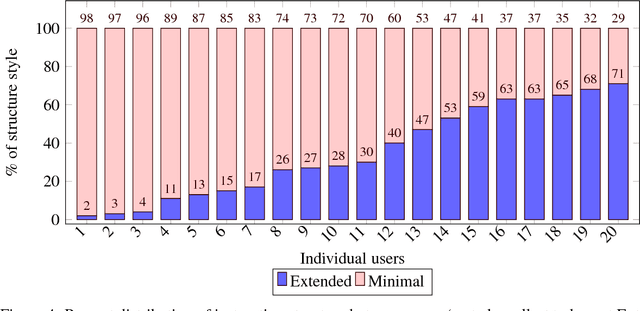
Abstract:This paper identifies stylistic differences in instruction-giving observed in a corpus of human-robot dialogue. Differences in verbosity and structure (i.e., single-intent vs. multi-intent instructions) arose naturally without restrictions or prior guidance on how users should speak with the robot. Different styles were found to produce different rates of miscommunication, and correlations were found between style differences and individual user variation, trust, and interaction experience with the robot. Understanding potential consequences and factors that influence style can inform design of dialogue systems that are robust to natural variation from human users.
 Add to Chrome
Add to Chrome Add to Firefox
Add to Firefox Add to Edge
Add to Edge